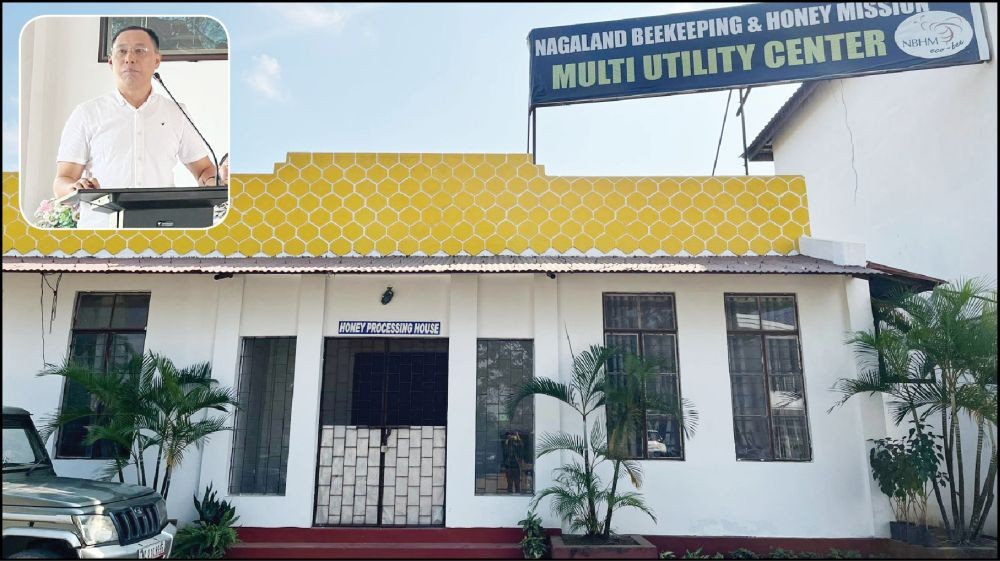NBKHM’s honey processing house located at its multi utility centre at 6th Mile, Sovima village Chümoukedima. (Inset) Khuvozoyi Vese, Deputy Team Leader of the NBHM speaking during the 5th Nagaland Honey Bee day. (Morung Photo)

Morung Express News
Dimapur | November 10
With Nagaland currently producing an output of about 440 metric tonnes of honey annually, the state has enormous potential for export to international markets under the premium sector of organic raw honey. However there is a catch to it stated, Khuvozoyi Vese, Deputy Team Leader of the Nagaland Beekeeping and Honey Mission (NBHM). This would require the state to produce above the threshold of 500-600 MT annually and on a consistent basis of supply of market demand which we are currently unable to do, he reported.
.webp)
Vese was speaking on the sidelines of the 5th Edition of the Nagaland Honey Bee day 2023 painting competition for students held at NBHM’s multi utility centre at 6th Mile Chümoukedima on November 11.
Previously, the state had an initial target of 2000 MT per annum to be achieved by 2030 but has now been scaled down to 800 MT after consideration of current rate of production, he informed.
At present Nagaland has about 1.6 lakhs bee colonies spread out across several districts. Under its mission, NBKHM has been able to engage in over 500 villages, inculcating education on the best practices of honey bee keeping, and develop about 70,000 scientific bee colonies. The remaining were 90,000 traditional bee colonies set up by the villagers themselves. Vese stated that the districts of Kohima, Phek, Zunheboto and Tuensang accounted for the majority of honey production

Under the tag line ‘Nagaland Honey,’ three varieties of honey have been made available in the market which include, honey of stingless bee, apis cerena and black honey. “There is a huge demand for our honey,” Vese noted. Due to which it has given rise to an increase in the price of the honey apart from its quality.
In regard to what makes Nagaland’s honey unique, he pointed to the fact that the bees collect the nectar from not just one but multi floral plant species resulting in different colours and tastes.

Bee Tourism at Mima village to be launched during Hornbill festival
The official also announced that starting from this edition of Nagaland Honey Bee day, the NBHM has partnered with the Tourism department to kick off the ‘Bee & Honey Trail,’ at Mima village, Kohima, in conjunction with the Hornbill festival.
The trail will begin from December 2 to 10 and will feature a tour exploring the bee pavilion at Kisama village, witnessing live demonstration of honeybee hives, inspecting local bee foraging plants, farmers market at bee farm Thawuzu among others.
This will be on a first trial basis which will expand to several other villages in the years to comes, the officials mentioned.



.jpg)


